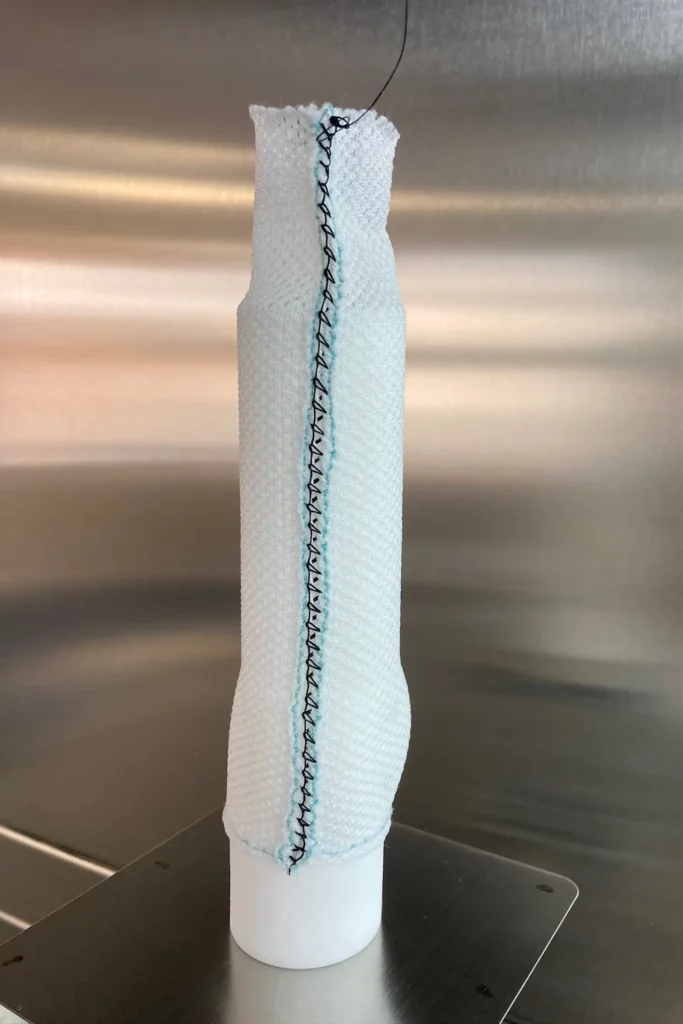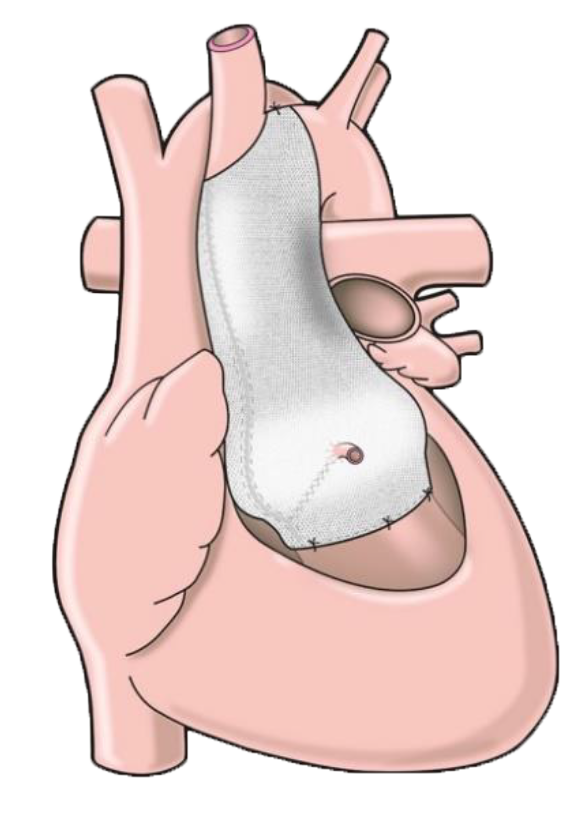In the Ross-PEARS procedure, the pulmonary autograft is supported by an ExoVasc® PEARS. This can prevent the dilation of the pulmonary autograft and reduce the need for future replacement.
The conventional Ross procedure
The Ross procedure is a way of replacing the aortic valve in young and middle-aged patients. It replaces the diseased aortic heart valve with the patient’s own healthy pulmonary valve. The pulmonary valve is then replaced with a healthy valve from a donor.
Patients can expect excellent long-term results with the Ross procedure. However the pulmonary valve which is used to replace the diseased aortic valve can, itself, need replacing.
This is because the pulmonary autograft dilates over time.
The Ross-PEARS procedure
In the Ross-PEARS procedure, following the replacement of the aortic valve with the pulmonary autograft in the freestanding root Ross procedure, an ExoVasc® PEARS supports the pulmonary autograft and can prevent dilation.
“The PEARS implant has changed my life, without such an invention I would be in and out of surgery for the rest of my life. The recovery time is called recovery for a reason, I learnt this by being too impatient. I will learn from my mistakes and take it easy, attend my rehabilitation sessions understand that having heart surgery is a big deal!”
Sonia Beard, 2016

The benefits
Reduces the likelihood of re-operation
The ExoVasc® PEARS prevents the dilation of the pulmonary autograft. This reduces the need for future replacement, especially in young and middle-aged patients.
Does not require anticoagulants post-surgery
Because the surgery uses human/biological valves, patients don’t need anti-coagulation medications post-surgery.
More about the Ross-PEARS procedure
Find out more about the procedure and who it is suitable for.
Patient stories
More than 1,500 people have had an ExoVasc® PEARS implanted. Some of them have shared their stories and experiences.
Patient benefits brochure
You may find our patient benefits brochure useful when discussing the ExoVasc® PEARS with your doctor.




